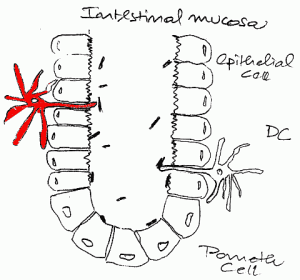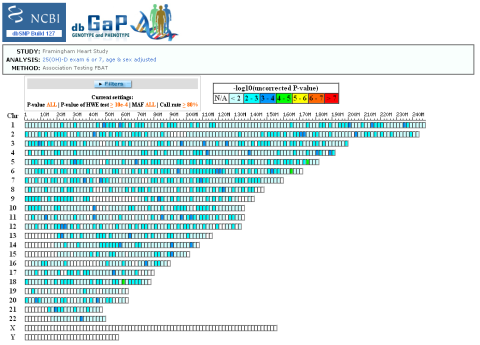A nice study in Hum Genet by Eiberg hit the public press (and the blogosphere 1|2). Although I agree with most commentators that this is a sound study with a bit antiquity dust in the methods, I am unsure if I should believe the main conclusion of a founder mutation Continue reading Blue eyes
Category Archives: Vitamins
Parascience in nature medicine?
I wonder about the title of a new nature medicine editorial
Breathing easier with breast milk
It is not so much the unwanted analogy to aspiration; the paper simply hasn´t to do anything with breathing. It is a poor narrative of a concomittant NM article repeating many of its prejudices. Although the authors would like to let you belief that they have discovered allergen transfer into breast milk, this is known Continue reading Parascience in nature medicine?
Tis strange – but true; for truth is always strange
This Byron quotation is taken from the foreword of Selye “Calciphylaxis” 1962 and may help to introduce the followup story on the question who described for the first time vitamin D as cofactor in the allergic sensitization process. Continue reading Tis strange – but true; for truth is always strange
A secosteroid transcriptional activator
A new vitamin D review is more serious about the biology and possible outcomes than some others.
The popular press is talking about vitamin D as “The Sunshine Vitamin”, promoting it as capable of reducing the risk of cancers and autoimmune disease. Yet vitamin D is actually a secosteroid transcriptional activator, at the heart of the innate immunity.
This looks trivial but it isn´t if you look at the NEJM paper Continue reading A secosteroid transcriptional activator
Link to nightmare
Sorry, I have no permission to reproduce any of the photos here but you can check the links below for some cod liver oil photos
nightmare | double use | evil woman.
Hans Selye: Ancestor of the allergy vitamin hypothesis
I spent a lot of time in libraries verifying bibliographic lists as I expected that somebody else could have had the idea of allergy induction by vitamin D before — in particular when being closer to the introduction of vitamin D supplements. Fortunately Science Magazine now offers a fulltext search of their archives (what is currently not possible with old Nature volumes). I could locate about 70% of the computer hits when searching manually the Science index for vitamin and hayfever. The loss of about one third could be mainly attributed to the fact that extra supplement pages have only occasionally preserved in the libraries that I have visited for this project (Marburg, Berlin, München STABI + TUM, Garching). Text recognition is also limited, so my results may be preliminary.
What I found this afternoon in the library at TUM Garching Continue reading Hans Selye: Ancestor of the allergy vitamin hypothesis
A, then E, then B, then D, and then again E
I have just completed an ultra short letter to JACI on a confusing vitamin D article Continue reading A, then E, then B, then D, and then again E
The world most-cited scientist
He leaves the lab at 5pm sharp – as a news feature about Shizuo Akira now tells us. This is remarkable as many of us believe that we need to work 80 hours a week. Much happens just by chance – as may be seen even with most-cited paper (of another vitamin researcher…)
Genetics of 25-hydroxy D3
A new paper in the EJCN examines genetic and non-genetic factors influencing vitamin D serum levels. The authors find 24% of the variability explained by season & intake Continue reading Genetics of 25-hydroxy D3
First 25OH-D3 GWA online
The first genomewide association for vitamin D serum levels is already online as the Framingham people told me earlier this day, many thanks!
There are 3 important regions on the above figure figure: around rs1394615, rs1877165 and rs2160595, see also the attached excel sheet fram25ohdexam6or7agesexadj.xls.
What are the reasons that my linkage study arrived at completely different regions? The accompanying BMC Genetics paper even highlights 2 different SNPs: rs1048516 + rs10507577). Anyway, the best region in my opinion is on chromosome 6. Here are the significant SNPs in relation to their neighboring genes: Continue reading First 25OH-D3 GWA online
You may fool all the people some of the time
Nature news reports an unpublished meta analysis of Cesarean section and asthma risk. The authors interpret the outcome in the light of the hygiene hypothesis: unhygienic siblings, risky! Normal delivery, risky!! No early bullshit, risky!!!
Again, delivery mode may be a proxy for physician contact and iatrogenic causes. Having heard today also lectures that take the hygiene hypothesis for granted, the old adage comes to my mind:
You may fool all the people some of the time. You can even fool some of the people all of the time. But you cannot fool all of the people all the time.
Do not stand between me and the sun
Diogenes, “the Cynic,” Greek philosopher, was born at Sinope about 412 BC, and died in 323 at Corinth, according to Diogenes Laërtius.
Do not stand between me and the sun – the vitamin/allergy story is getting confusing with the new JACI review. Continue reading Do not stand between me and the sun
Can you see these neat little fingers

… reaching into the intestinal lumen? They belong to dendritic cells and are depicted also in a nice review about immune responses to commensal and environmental microbes Continue reading Can you see these neat little fingers
Archie Cochrane speaking
I did not expect what a new Cochrane writes on the prevention of nutritional rickets in term born children — Cochrane Database Syst Rev. 2007 concludes
There a only few studies on the prevention of nutritional rickets in term born children. Until new data become available, it appears sound to offer preventive measures (vitamin D or calcium) to groups of high risk, like infants and toddlers; children living in Africa, Asia or the Middle East or migrated children from these regions into areas where rickets is not frequent. Due to a marked clinical heterogeneity and the scarcity of data, the main and adverse effects of preventive measures against nutritional rickets should be investigated in different countries, different age groups and in children of different ethnic origin.
May I summarize: 1. only a few studies; 2. vitamin D OR calcium and 3. to high risk kids only. This looks different to what Nestlé manufactures at the moment.
Contrary or Contradictory
A forthcoming “Perspectives in asthma” paper in “JACI” by Litonjua and Weiss will be about the vitamin D hypothesis. Although the authors find that
Evidence exists that vitamin D induces a shift in the balance between TH1 and TH2-rype cytokines toward TH2 dominance
they make a largely unexpected turn by saying that vitamin DEFICIENCY may be to blame for the asthma epidemic. The basic argumentation is
We hypothesize that as populations grow more prosperous and more Westernized, more time is spent indoors and there is less exposure to sunlight leading to vitamin D deficiency…
Given the immediate and effective vitamin D production in skin and its longterm availability by fat stores I cannot follow their last conclusion. Continue reading Contrary or Contradictory
